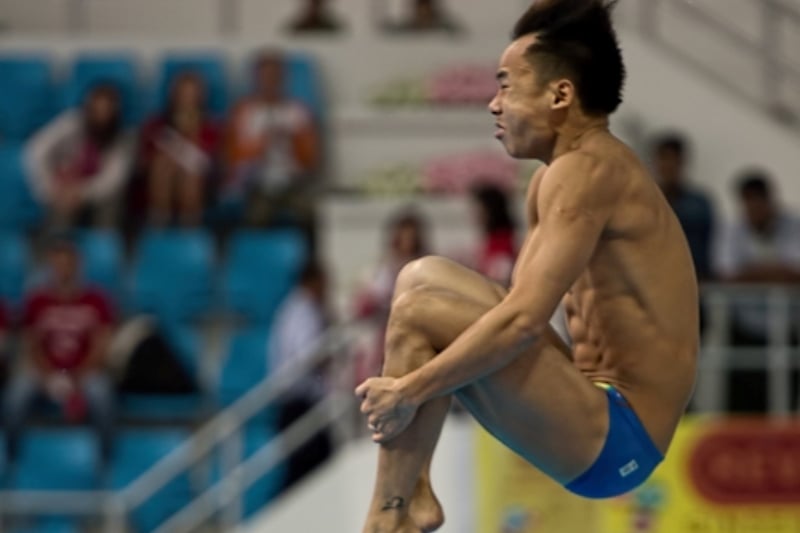Dive groups and positions in springboard and platform diving
Now that you’ve learned the six main dive groups and how to properly get off the diving board or platform, the next step is finding out the body positions you can adopt during a dive, as well as how to do a proper kickout.
During the flight of a dive, one of the following four body positions can be assumed:
- Straight
No bend at the waist or knees. Depending on the dive, there may be an arch in the back. Arm placement is the diver’s choice or defined by the dive performed. This is the hardest of the four body positions.
- Pike
Legs are straight with the body bent tightly at the waist. Like the straight position, arm placement is dictated by the particular dive or the diver’s choice . The open pike is a variant where the arms are reached to the side. This position is of medium difficulty.
- Tuck
Body is folded up in a tight ‘ball’, bent at the waist and knees. Thighs drawn to the chest and heels kept close to the buttocks, with hands holding the shins and toes pointed. This is the easiest of the four positions.
- Free
Indicates the diver’s choice of using any of the above three positions, or combinations thereof, when performing a twisting dive. In the transition between two positions, the diver may for example, bend their legs, and points will not be deducted for doing so.
Aside from learning the various body positions, it is also crucial for a diver to understand how to properly kick out of a back or reverse somersault in tuck. Here, we summarise the four parts that make up a kickout – the legs, the hips, the upper body and the arms.

Image credit: Guek Peng Siong/SportSG
- Legs
The legs should be the first part of the body that initiates the kickout. Straightening the legs first should be the main priority.
- Hips
Once the legs are extended, the diver then moves his attention to the hips, opening them up from what is similar to a pike position to a straight position. As this happens, the hands should slide down the body resting on the thighs; parallel to the now straight body. The diver’s head should be slightly down, focused on the feet or legs.
- Upper body
Once the hips are open with the hands parallel to the body and the head down, the diver can relax the shoulders and begin to look back for the water. The body will start to resemble a stretching position as the diver prepares for entry into the water.
- Arms
At this point, the head should be moving back, beginning to look for a spot on the water, and the hands should also move toward the water. Divers should keep their arms in the middle and close to the body as it gives a better opportunity to grab their hands together.
To receive the latest updates on the happenings in the Singapore sports scene, or to find out more about some of the latest programmes on offer at ActiveSG, like our Facebook page here.



